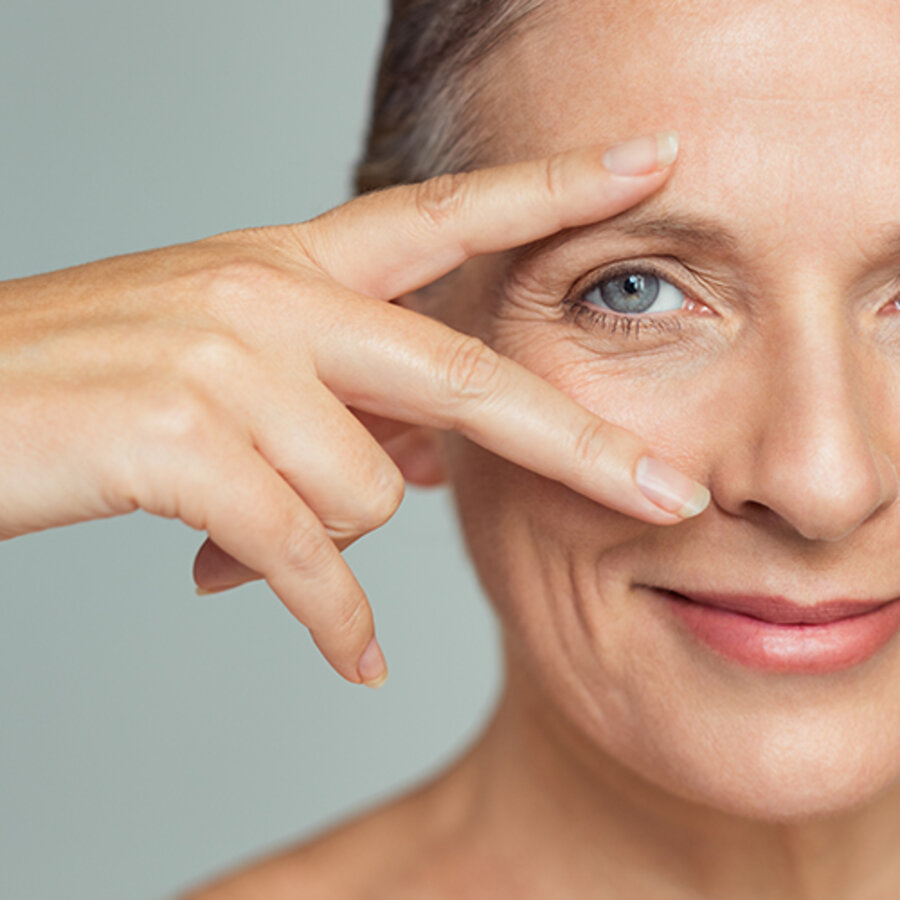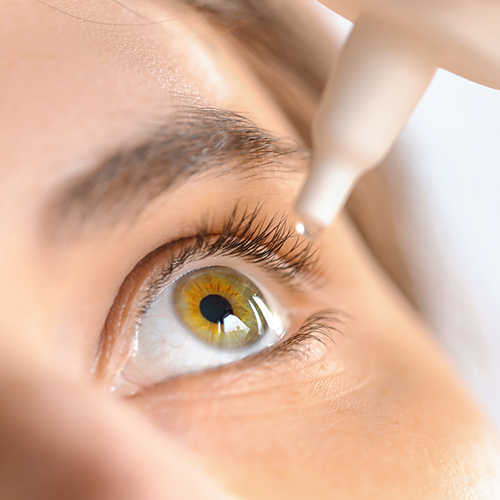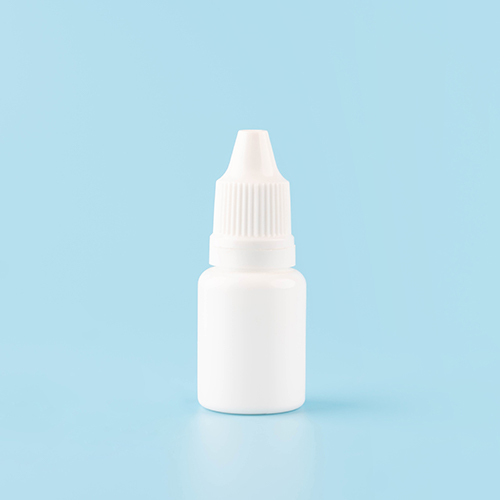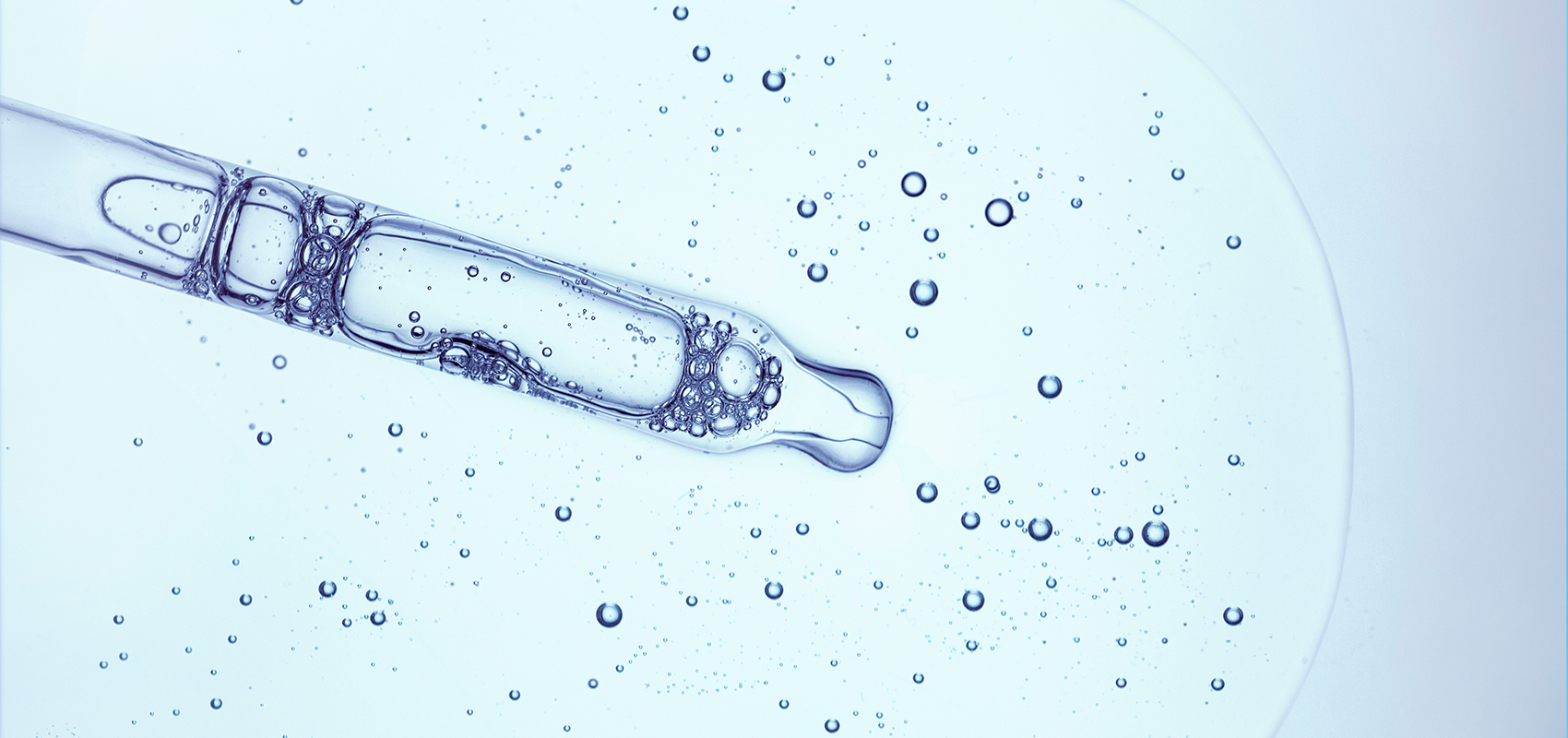We often hear about hyaluronic acid as a key ingredient in facial creams, especially anti-wrinkle creams, but the cosmetic field is only part of the applications of this molecule: thanks to its high biocompatibility and its various physiological activities, hyaluronic acid is an ideal product for pharmacological applications, especially in ophthalmology, rheumatology and dermatology.
Hyaluronic acid is produced physiologically by the body: about 50% is found in the dermis (the deepest layer of the skin), where it helps preserve moisture by preventing water evaporation and forms a kind of 'scaffolding' that keeps the skin firm and elastic. In the case of wounds or abrasions, it promotes healing and tissue repair. Hyaluronic acid is also found in the synovial fluid that lubricates joints, in the eye, in heart valves and in skeletal tissue.
Hyaluronic acid and the eye
In the eye, hyaluronic acid is present in the vitreous humour and aqueous humour, the tear fluid, the lacrimal glands, the conjunctiva and the corneal epithelium. The role of this molecule within our eye is primarily structural: hyaluronic acid and collagen create a fibre-reinforced compound in the vitreous, which maintains the shape and mechanical stability of the eye, while also allowing selective diffusion of nutrients and solutes.



The molecule used in pharmaceuticals: hyaluronic acid or sodium hyaluronate?
Hyaluronic acid is found in pharmaceutical and/or ophthalmic formulations in the form of sodium hyaluronate (the sodium salt of hyaluronic acid), a molecule obtained through a reaction between hyaluronic acid and sodium hydroxide. This results in a less acidic product with an almost neutral pH and more soluble in water.
Sodium hyaluronate is a very hydrophilic molecule, capable of attracting large quantities of water: a single molecule of sodium hyaluronate can hold up to 10,000 molecules of water! This characteristic gives sodium hyaluronate excellent moisturising properties; in addition to these, the molecule also has important re-epithelising properties.
Sodium hyaluronate in the treatment of dry eye
Dry eye disease is a fairly common disorder in which there is an alteration in the quantity and quality of the tear film covering the surface of the eye, which is necessary to ensure proper lubrication and clear vision. People who spend a lot of time in front of a screen (PC, smartphone, TV, etc.), menopausal women and diabetics are particularly affected.
One of the most common treatments to alleviate the signs and symptoms of dry eye is the use of artificial tears. Sodium hyaluronate is the basic ingredient in most of these artificial tears, both because of its physiological presence in natural tears and because of its strong biocompatibility and beneficial properties. Sodium hyaluronate is generally combined with other substances to enhance its effectiveness.
Tear substitutes currently on the market to treat dry eye include hyaluronic acid in a concentration that typically varies between 0.1% and 0.4%. The concentration of hyaluronic acid influences the viscosity of the solution and the duration of symptom relief, so it is an important discriminating factor in the choice of therapy depending on the pathology.
There is an innovative formulation of artificial tears containing an even higher percentage of sodium hyaluronate (as much as 0.5%!) mixed with high concentrations of vitamin B12 and taurine, which is recommended to stimulate the regrowth of corneal nerve endings and faster re-epithelialisation following cuts or abrasions.
One of the latest products on the market, considered to be a state-of-the-art tear substitute, contains sodium hyaluronate (0.2%) and hydrocortisone at a low concentration (0.001%). A clinical study conducted on dry eye patients with symptoms persisting for at least 6 months showed that, in addition to improving the signs and symptoms of dry eye disease more effectively than eye drops containing only hyaluronic acid, the sodium hyaluronate-low-concentration hydrocortisone solution not only provides the familiar moisturising and lubricating action of hyaluronic acid, but also reduces the slight hint of non-visible mild inflammation (para-inflammation) present in dry eye patients, without inducing any adverse events.
A product containing 0.4% sodium hyaluronate and 0.5% of the amino acid taurine in a preservative-free formulation has a higher viscosity, which ensures that it remains on the ocular surface for longer. This product is indicated for more sustained forms of dry eye and is ideal for night-time treatment of the disorder as an alternative to eye drops with lower concentrations of sodium hyaluronate, which have a lower viscosity. The product with sodium hyaluronate 0.4% and taurine 0.5% is characterised by an excellent moisturising and osmoprotective action (it restores the osmotic balance of cells) and its efficacy has been demonstrated in patients with dry eye due to chronic use of hypotensive eye drops for the treatment of glaucoma.






How do you rate your experience on our site?
Comments
You need to log in to post a comment
No comments inserted